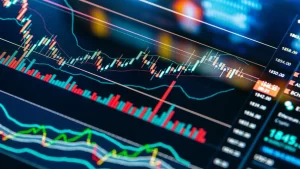
AI revolution is having a dramatic effect on the stock market, providing traders and investors with powerful tools for optimizing performance such as AI-powered trading algorithms.
These algorithms enable users to quickly identify the most profitable and risky trades based on market data, saving both time and allowing for efficient management of transactions.
Identifying Trends
Trend detection and price prediction are integral parts of intelligent analytics. Being able to recognize and forecast trends can give businesses using AI technologies an important competitive edge; using this insight from data-driven insight to optimize business processes or make strategic decisions more effectively. Time series data, which measures changes over time, is often utilized for this analysis process; either predictably through mathematical functions, or stochastically which represents random changes over time.
Utilizing advanced forecasting techniques and predictive models enables businesses to make accurate predictions regarding future pricing trends for AI solutions, providing accurate projections that allow for effective pricing strategies and maximize revenue. Trend analysis through artificial intelligence also can assist companies in understanding consumer behaviors to ensure products align with market demand as well as identify emerging trends early – all contributing towards greater user satisfaction and higher loyalty ratings for customers.
Predicting Market Movements
AI can quickly process massive amounts of data, quickly identifying trends and patterns that would otherwise be difficult for human traders to detect. Furthermore, it provides assistance in market forecasting and price prediction – helping businesses recognize opportunities they might otherwise miss out on.
Machine learning is one of the most widely-used AI trading tools, offering advanced algorithms with predictive capabilities. AI also plays an essential role in maintaining investor trust and market integrity by detecting suspicious activities that compromise them.
AI-powered pricing models allow businesses to analyze market conditions to anticipate future conditions, enabling real-time price adjustments that improve profitability and maintain competitiveness. Accuracy depends on factors like data quality and computing resources used, model complexity and model parameters – therefore it is imperative that businesses partner with an AI development company who will produce accurate predictions that respond in an timely manner.
Identifying Risky Trades
AI tools can assist in this endeavor by analyzing a wide variety of data to produce accurate and reliable results, particularly beneficial when it comes to recognizing patterns that humans would otherwise miss, which may lead to profitable trades.
AI can make predictions much faster than traditional methods due to its ability to process large volumes of data in real-time, as it processes it all at once. Furthermore, it can detect anomalies in new trades by comparing them against historical patterns – helping ensure traders are following their strategies properly.
However, it should be remembered that artificial intelligence (AI) is only as good as the data it analyzes and algorithms it utilizes. If any errors exist in either factor or AI algorithm used, inaccurate trading decisions could occur as a result. To mitigate such situations, choose reliable AI tools while working closely with human financial advisors.
Identifying Profitable Trades
AI’s ability to process large volumes of data and predict trends enables it to quickly identify profitable ventures. Furthermore, its capability of monitoring market fluctuations against various criteria allows AI to reduce risk significantly more effectively than humans can.
Artificial intelligence is revolutionizing how trading and investment decisions are made. By helping reduce cognitive biases and human emotions, artificial intelligence provides traders with more objective tools for decision making quickly and accurately resulting in superior results.
AI can identify patterns and predict future price movements without the need for expert knowledge or years of experience, making stock trading accessible even without spending on expensive software or training courses. Furthermore, it saves both time and resources by processing large volumes of data automatically so that you can focus on more crucial aspects of your business.







